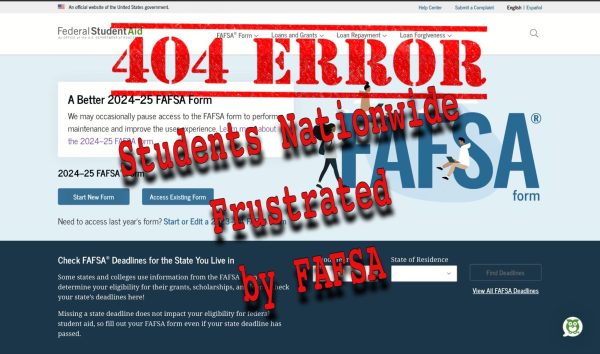Trump threatens deportation
Southern wall proposal included in border security order
February 7, 2017
In an attempt to fulfill one of his most controversial campaign promises, President Donald Trump signed an executive order to increase border security capabilities by federal law enforcement agencies and also clear a path toward construction of a southern border wall.
The order, signed by Trump on Jan. 25, cites existing immigration law as its foundation, including the Secure Fence Act of 2006 (Public Law 109 367) and the Illegal Immigration Reform and Immigrant Responsibility Act of 1996 (Public Law 104 208 Div. C) among other statutes.
Absent from the document is any mention of the 740,000 Deferred Action for Childhood Arrival (DACA) petitioners or any cost and timeline analysis of how the order would be implemented.
The purpose of this order, which can be found on whitehouse.gov, is to direct executive departments and agencies to deploy all lawful means to secure the southern border and to prevent further illegal immigration into the United States.
“The wall is completely unnecessary. How effective can it really be?” business major Angelica Espinal asked.
“Why spend the money on an idea that doesn’t work. It should be spent on public education.”
It also plans to repatriate undocumented immigrants swiftly, consistently and humanely.
Threats of the withdrawal of federal aid to Mexico, meant to encourage a cooperative effort to reduce migration, are also included in the order.
Moments after the Jan. 25 signing, Trump spoke to employees at the Department of Homeland Security about border control and his vision for American safety and economic opportunity.
“I’m asking all of you to enforce the laws of the United States of America. They will be enforced and enforced strongly,” Trump said.
“The secretary of homeland security, working with myself and my staff, will begin immediate construction of a border wall. So badly needed, you folks know how badly needed it is.”
A complete transcript of the address is available at c-span.org.
Protests against the impending policies that Trump proposed during his campaign have become a regular occurrence due to the immediate impact immigration policy shifts can have on families.
Despite President Obama earning the moniker the “Deporter-in-Chief,” his loosely knit immigration safety net of executive orders was completely untethered by the Trump administration’s actions.
From 2009 to 2015, the Obama administration deported roughly 2.5 million people.
To contrast his robust deportation figures, Obama signed five executive orders November 2014 to allow certain immigrants to apply for relief from deportation.
Aside from the nearly five million people the order was hoped to protect, it also sought to refocus the efforts of the Department of Homeland Security to deporting serious criminals.
The uncertain impact that reformed immigration enforcement will have has prompted many municipalities to reaffirm the commitment to maintaining sanctuary status.
A gesture of solidarity to the immigrant community made by the Contra Costa Community College District Governing Board gives sanctuary status to all of the colleges in the district, including Contra Costa College.
Recognizing that some of the students and faculty members on staff will be adversely affected as a result of Trump’s executive order, CCC offers counseling sessions to try to help campus community members who may be dealing with difficult circumstances.
“Some folks don’t feel comfortable coming in yet because of the climate that we live in,” CCC counselor Norma Valdez said.
“I saw two students recently, one a Muslim student whose spouse was traveling, and she was afraid because of the travel ban. And a DACA student who was generally stressed and experiencing a lot of anxiety,” she said.
Personal or group sessions are available, and sessions can be scheduled by contacting the Counseling Center in room SSC-108 or by calling 510-215-3935.
Drop in sessions are also available.
“We want to highlight the counseling options and let students know we are here to talk about whatever they want to talk about,” Valdez said.











